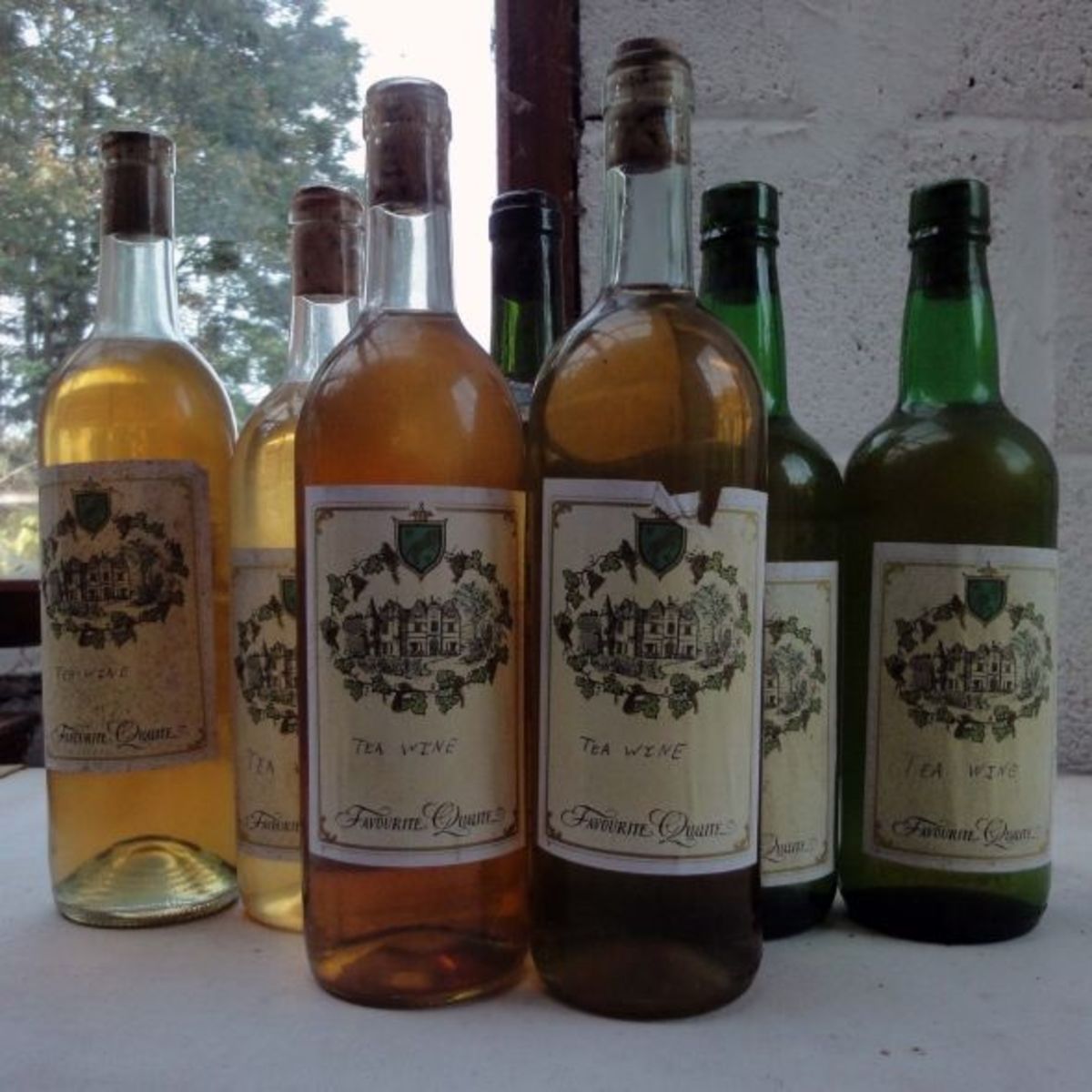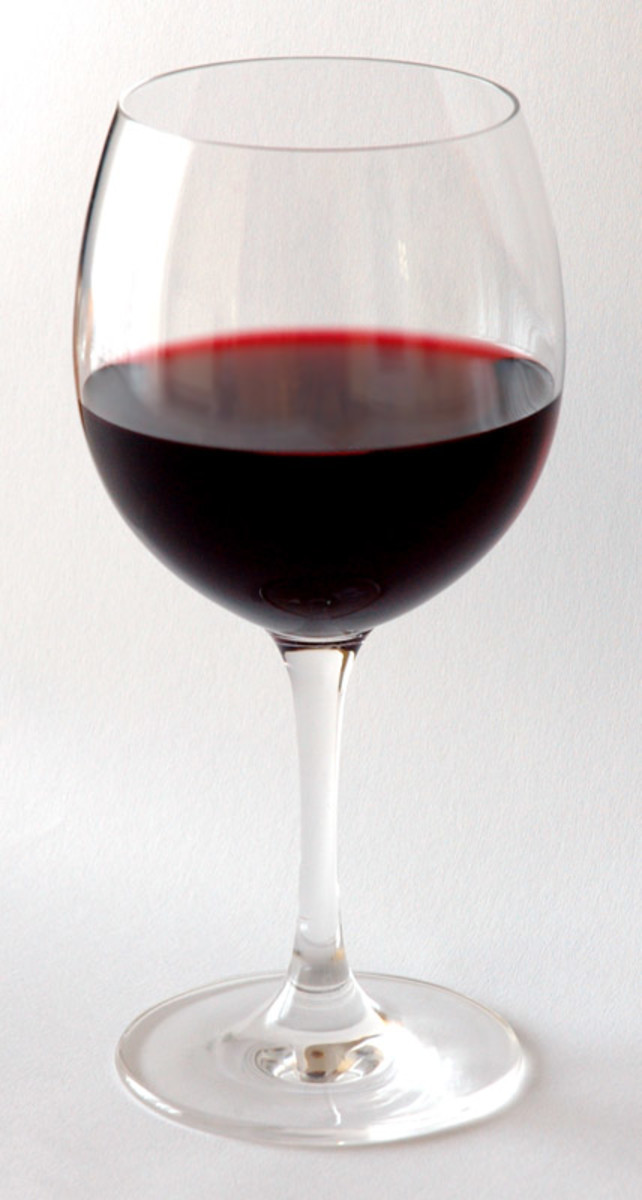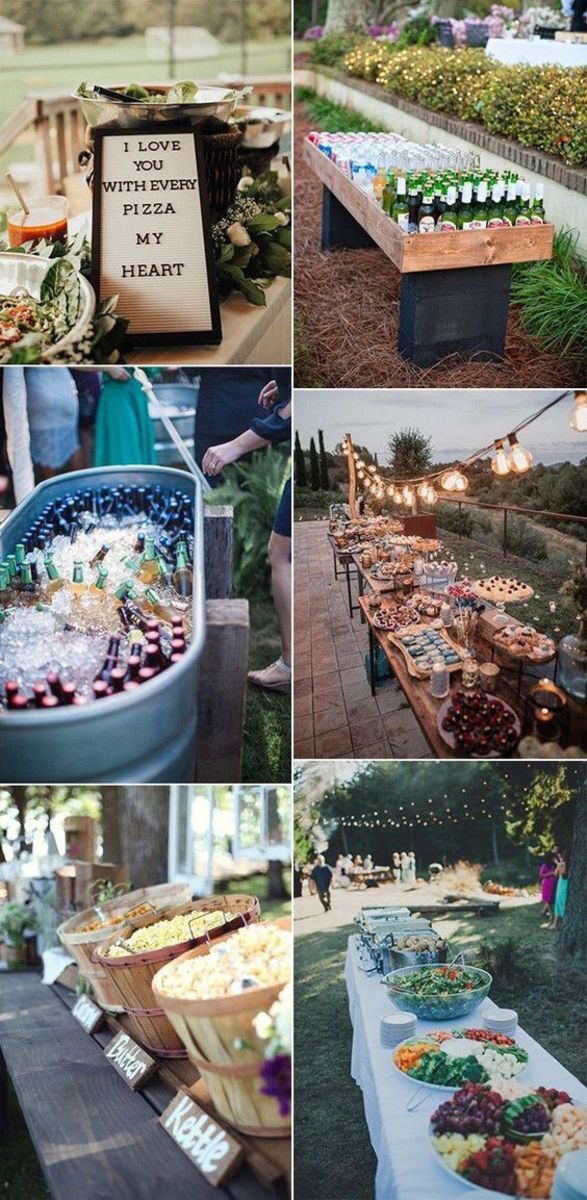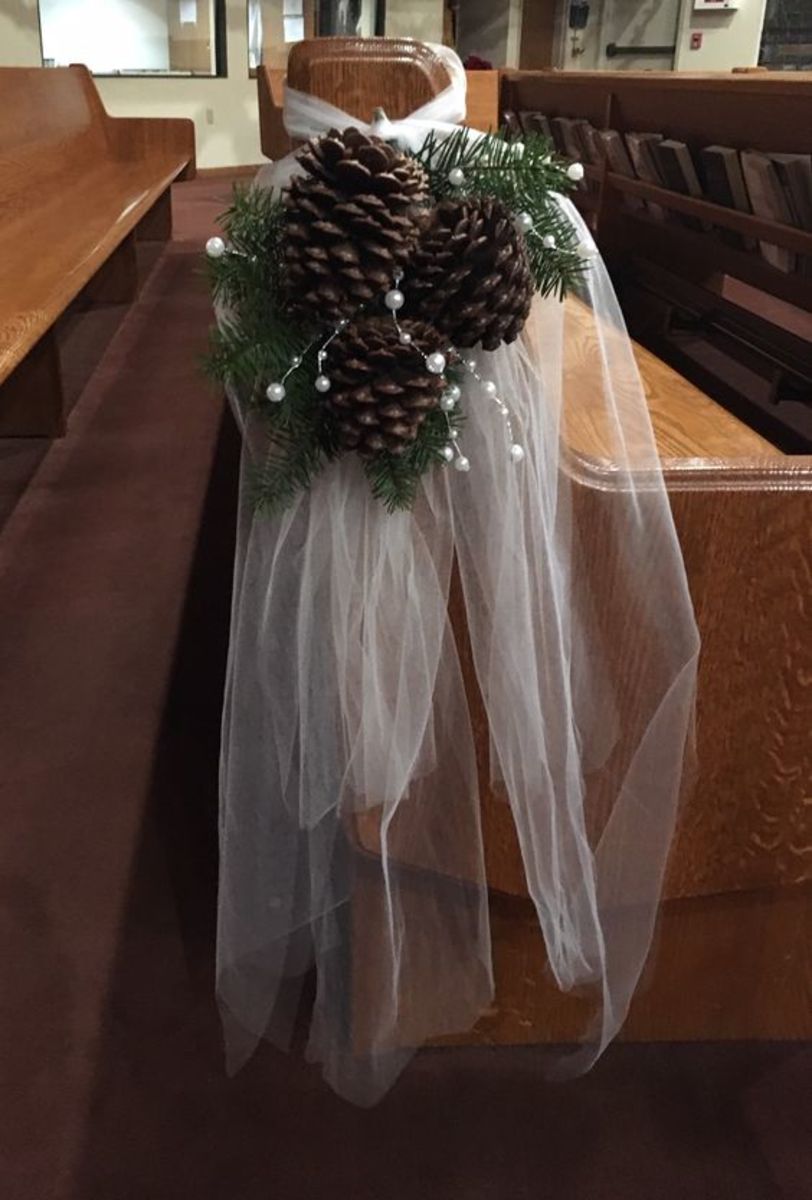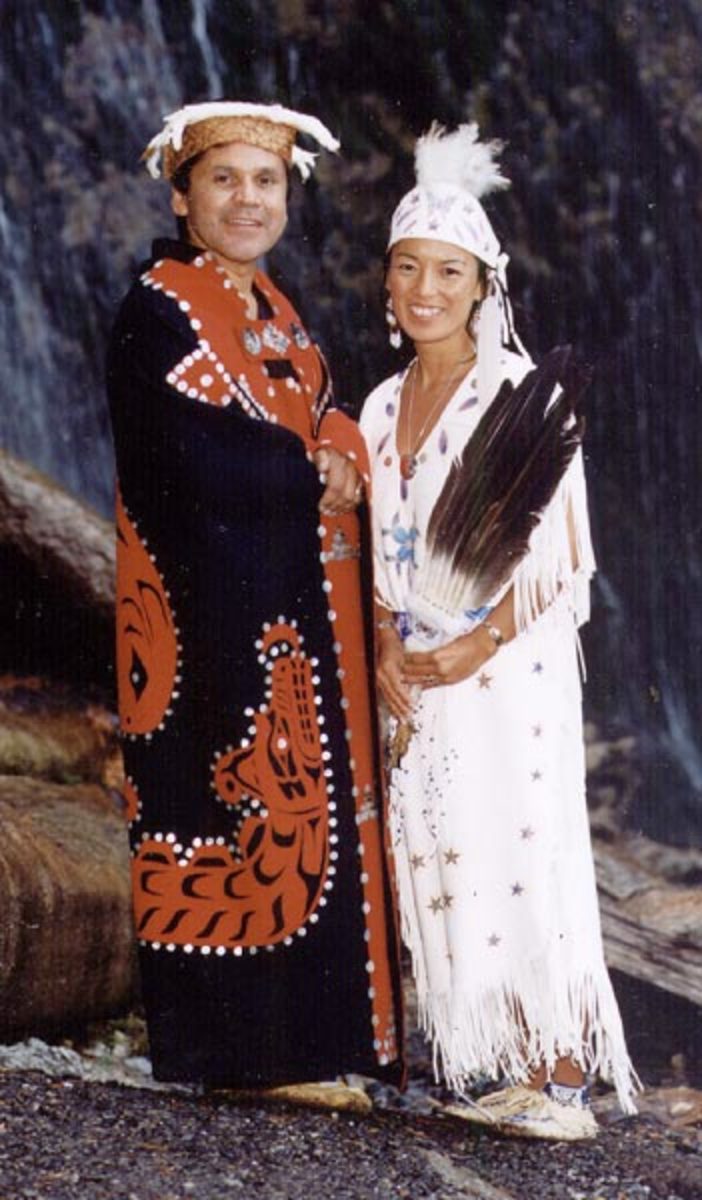Serving Wine at Your Wedding
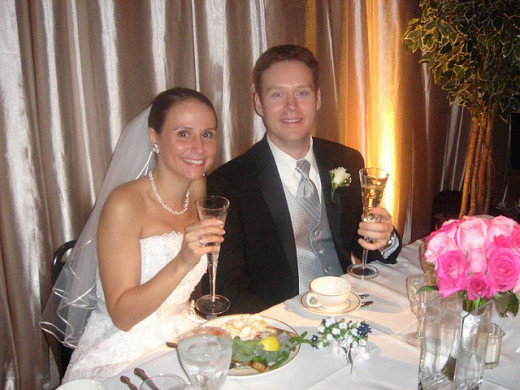
Serving Wine at Your Wedding
Decide on Serving Wine at Your Wedding
Wine is one of those things in life that makes you feel good. Why not serve wine at your wedding and have all your adults feeling good! There are basically four routes you can go. First choice, you can have offer red wine and white wine at every place setting. Second choice, you can have a wine tasting or have a wine and cheese tasting right before your wedding reception dinner. You can educate your wedding guests by pairing which cheeses and wines go together well. Third choice, you can pair wine that goes well with the dinner entrees that you have chosen, or fourth choice, you can offer assorted wines with the other drinks at the bar.
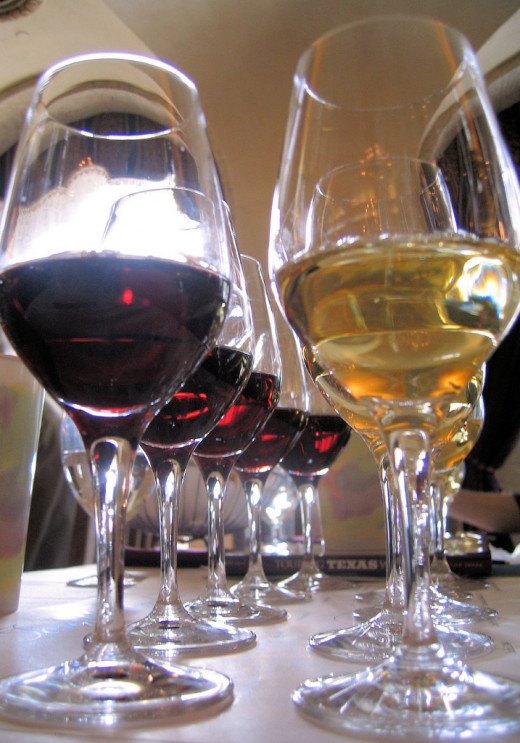
Red Wine Goblets
White Wine Goblet
Classic Champagne Flute Set
How Good Wine is Harvested
Basically, wine comes from red or white grapes. Good wine comes from good grapes picked at the perfect time, when the grapes become perfectly ripe. If the grapes are picked too early, they aren't ripe enough to make good wine and if they are picked too ripe, the wine's taste will suffer too. The weather is another important factor in producing good grapes, should the weather in a season get too much cold, hot, wet, sun, frost, flooding, hail, or should the grape crop get bugs, creatures, fungi, or bacteria, any of these impediments can have an adverse effect on producing good grapes turned into good wine.
Once perfectly ripe grapes are picked, they are sorted and placed into bins or large stone lagers. Grapes are then pressed, they can be pressed and processed a number of different ways. Some grapes are pressed with machines called bladders, some are pressed using their own natural weight and some are pressed using an old fashioned way, pressing with one's feet. The wine goes through a filtering process and yeast is added to help in the fermentation process. Red wine is usually processed along with their skin, the skin of grapes is called tannins.
White wine is generally not processed with tannins. The juice from white grapes is separated from their skin for their fermentation. The juice extracted from grapes are normally put in barrels or bottles and placed in a wine cellar and left to ferment for a period somewhere between 6 months to 3 years. The temperature of a wine cellar needs to be maintained between 45-65 degrees Fahrenheit, ideally kept at a temperature of 55 degrees. The wine should be kept away from light, for light degrades and prematurely ages wine. The humidity in the wine cellar is important too, the humidity should be between 50-80%.
Wine in good wine cellars are checked regularly, wine moved between barrels or vats often by the introduction of nitrogen gas. Finally the wine is ready for processing, filtration is used to make the wine bright and clear and removes any risk of microbial spoilage. The wine is often combined with all sorts of fruits, spices, chestnuts, herbs, honeysuckle, notes, truffles, flowers, vanilla, oak, and the like. Wine brands have a wine formula that must be followed. For example, Cabernet Sauvignon has as it's wine formula as red wine mixed with red fruit and spice.
How To Make Red Wine
How To Make White Wine
Thermoelectric Wine Cooler
32 Bottle Wine Rack with Glass Table Top
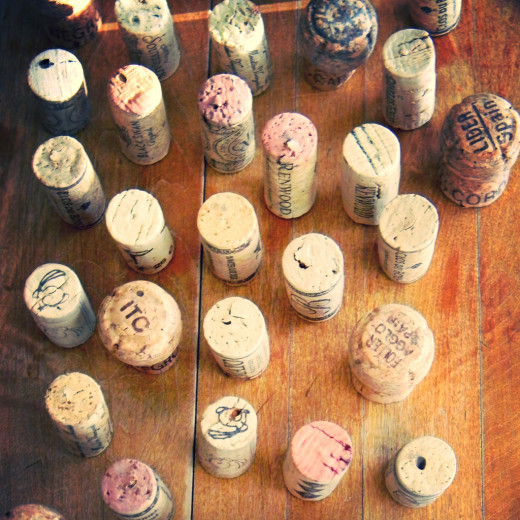
Wine Cork Place Card/Photo Holder
Cork Is Important to Making Good Wine
Cork is another important element in keeping the wine good in the bottle. Cork comes from cork oak trees found in Spain and Portugal. Every nine years, the cork oak bark is scraped off from cork oak trees. Cork oak bark is generally stored on top of cement flooring. Eventually the cork oak bark is placed in a large vat container and boiled. A press punches the cork, or the scraps are granulated and agglomerated into cork as well. Wine bottles are always laid horizontally to keep the cork moist to keep them from drying out.
How Rose Wine Is Made
Another type of wine is rose wine. Rose wine is also made from red grapes or red grape varietals. There are four approaches in the processing of rose wine. First is bleeding (grapes are pressed using their own natural weight). Second is pressing (grapes are pressed until the desired color is reached). Third is limited macerating (grapes are left in bin until winemaker is happy with color, then the liquid is transferred into another bin). Fourth is Run Off (The winemaker little by little removes the liquid from the fermentation vat).
How To Serve Wine
How Port Wine Is Made
Port wine comes from a relatively, small thick skinned berry native to the Douro Valley in Portugal, There are around 30 types of port grapes used in creating this wine. This region has hot and arid conditions which helps to make good wine and this wine maintains a good taste for a very long period of time. Many port wines peak with taste about 20 years after harvesting and the wine stays good even for many years after that. Some good port wines include Touriga Francesca, Touriga Nacional, Tinta Roriz, Tinta Barroca, Tinta Amarela, and Tinto Cao.
Mechanical Butterfly Corkscrew
Wine Bottle Stopper
Wine Champagne Bucket 8 Quart
How Champagne is Made
Champagne is made in a 9 step process. Champagne is made from white grapes picked at their peak and pressed quickly after harvest. The grapes are pressed twice, the first press produces high quality champagne, the second a lesser quality champagne. The grapes undergo fermentation, they are mixed with different grapes, and yeast then is added fermenting the grapes again, then the grapes are combined with still wine and sugar and stored in bottles. The champagne at first is stored horizontally and stored on special racks called pupitres with the crown cap pointed down.
Every few days the bottles are slightly turned and given a shake and twist and placed back in the pupitres each time the angle gradually increased. Finally what is called a disgorgement happens in which dead yeast and sediment is removed by freezing the neck of the bottle in a freezer brine. The bottle is turned up, the crown removed, a sugar mixture is added to replace the liquid lost. The final cap is inserted and a protective wire cap is inserted onto the bottle.
Serving Wine at Weddings
Now for serving wine at weddings. Many of the more upscale wedding reception venues and restaurants often have a wine cellar on their premises. The thing to note about the wine that is often kept in-house, often the wine in these wine cellars, these venues often charge patrons a good amount of money for drinking their wine, for example, these businesses may buy the wine at $5 retail bottle cost and charge a patron $25 for drinking and corkage fees. If the venue will allow you to bring your own wine, you just might save yourself a substantial money, that if they allow you to bring your own wine.
You can pick your own wine up either at local wineries or reputable liquor stores. If you must use a venue's wine, ask them what wine they would recommend and ask them for wine that is not so expensive. When you pick up wine for your wedding, wedding planners recommend ordering 50% red wine and 50% white wine. If you want to serve rose wine in addition, then order 45% red wine, 45% white wine and 10% rose wine.
To determine how many bottles to order at a wedding apply the 80% rule for 750 ml bottles. You should figure that 1 guest will drink 1 glass of wine per hour for 4 hours. A bottle of wine serves 5 guests 1 drink each. If you have 100 guests, you should order 80 bottles of wine and split it 50/50 ordering 40 bottles of red wine and 40 bottles of white wine. If you include rose wine, and have 120 guests, you should order 36 bottles of red wine, 36 bottles of white wine and 8 bottles of rose.
When ordering champagne, champagne holds 6 glasses of wine in a bottle. Figure on guests drinking 2 glasses of champagne. A champagne bottle will provide drinks for 3 guests. To figure the amount of champagne you should order for your wedding, take the amount of wedding guests and divide by 3. If you have 120 wedding guests for your wedding you should order 40 bottles of champagne for your wedding toast.
As for wine glasses on your wedding reception table. There are 3 distinct glasses for red wine, white wine, and champagne. A wine glass is comprised of three parts, a bowl, a stem, and a foot. The red wine glass has a wide bodied bowl, a white wine glass has a medium bodied bowl, and a champagne glass, also called a champagne flute has a narrow bodied bowl but a bowl that is a little elongated.
The red wine glass is wide to capture the aroma of wine, the champagne glass is narrow to capture the bubbly and designed to keep the bubbly lasting longer. When ordering red and white wines, the recommendation is for wedding couples to order a red wine and a white wine in which the wedding couple likes the taste. The couple should go on a taste testing and find a wine they like and that fits in with their budget. In this way, if any wine is left over after the wedding, the couple would end up with leftover wine that they like and may have good wine for entertaining their guests.
If the wedding couple are still undecided on which wine to choose, they seek out a winemaster for recommendations of what would be a good pairing with their meal. Also, when it comes to wine, many groups have wine tasting to evaluate each year's wine crop. There is a wine tasting scale which goes from 100 which is rare and called classic, a score of 94 is outstanding wine, 89 is very good and below 75 is not recommended.
Wine is tested by vintage, winery, and year and the results of the wine tasting are put into wine tasting charts. A good place to check out wine tasting scores is to consult with the Enthusiast Magazine Vintage Chart in helping you decide on which wines to try and to order. Red wines are said to be generally good for 1 to 5 years after processing and after 5 years the taste begins to gradually degrade. A white wine is said to be good for 1 to 4 years after processing and starts to degrade in taste after 4 years.
Where To Place Wine Glasses at a Place Setting
The wine glasses on a reception table are usually placed at a wedding place setting to the right of a charger plate or serving dish at a 45 degree angle just above the placement of a water glass. The wine glasses should be placed either in a straight line or triangle formation.
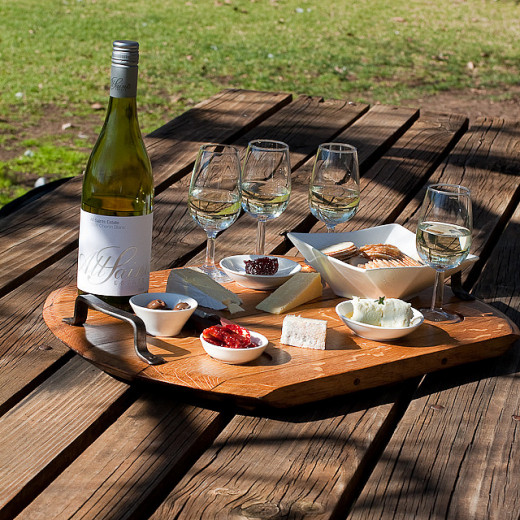
Wine & Cheese Pairing Wheel
RSVP White Porcelain Cheese Labels
Cheese Gifts - Cheese and Wine Pairing
Cheese Tray with Cracker Wheel
5 Pcs Travel Cheese Set with Cutting Board
Types of Wine Tastings
As for having a wine tasting at a cocktail hour before the wedding reception dinner, there are basically 5 types of wine tastings. 1) A vertical tasting (sampling wine from a winery for a period of 5 years straight, from 1 to 5 years to sample wine taste changes), 2) A horizontal tasting (the wedding couple should pick up a similar type of wine from 4 to 6 wineries), 3) Price point tasting (pick up wines at different price ranges, less than $20 range, $20-$30 range, $30-$50 range, and over $50 range), 4) Old World vs. New World tasting ( Old World - wines from France, Italy, Germany, Austria, Spain, and Portugal), New World - North America, South America, New Zealand, Australia) and 5) Blind Taste Test (bottles covered and numbered and taste is described).
For a taste testing, have a glass or pitcher of water to neutral the taste in your mouth in between tasting. Also supply munchies such as bread morsels, crackers, pate, mild cheese cubes, pretzels, grapes, dried fruit, or trail mix. For a wine tasting you might include a tasting card including the type of wine, the producing vineyard, their address, the year made, a brief description, and a space to leave remarks for appearance, aroma, and flavor.
At your taste testing, pour 2 ounces of wine into each clear glass. As for wine and cheese pairings, often certain wines and cheese often tastes best when paired together. Mild cheeses pair well with light wines and more robust wines pair well with more pungent cheeses. If you have a wine and cheese tasting party before your wedding reception, make sure different shaped or colored cheese spread knives or forks are kept with the different cheeses so the cheeses won't contaminate one another
You can consult with wine and cheese pairing tables to help you decide what wines and cheeses go together. For example, a Pinot Gris wine pairs well with Brie Cheese. Good wine and cheesing pairings can be found at these websites; fredmeyer.com, wineinquirer.com, winemag.com , and gourmetfoodstore.com.
A great idea when having a wine and cheese tasting, is to set up long reception tables covered with poster board. Draw boxes for wines on the backside of the table and draw circles for cheeses in front. Place pairings of wine and the cheese that goes with it in front, proceeding down the table. Draw arrows with the names of the wine along with the cheese that goes well with it and write "Pairs With" using a large magic marker.
The third way to serve wine at your wedding is by finding what wine is found to taste best paired with a meal. For example, a New York Strip Steak pairs well with (Zinfandel, Merlot, or Syrah/shiraz) wine, Lobster pairs well with(Chardonnay, Rose, Pinot Grigio) and Pork Tenderloin pairs well with (Zinfandel, Pinot Noir, and Zweigelt). A great website to find wine pairings with food entrees is called hellovino.com. Look for pairings for pork, chicken, lamb, beef, pasta, shellfish, seafood, salads, pizza, and sushi. If you have questions on which wine to serve at your wedding, there are many winemasters at wineries or find wine experts at a well run liquor store. Find a winemaster who has a little experience and who is very knowledgeable of wine.
Bamboo Cutting Board
Slate Cheese Board and Chalk Set
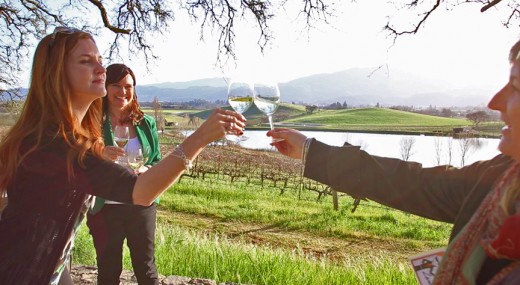
- Advice For Creating A Good Marriage
A good marriage takes some work, it does not just happen. This article lays out some rules in order to create a good marriage. Each spouse must do their part, to create a successful marriage. - Consider Having A Chocolate Fountain For Your Weddin...
Consider offering a chocolate fountain at your wedding. This article talks about how to set up a chocolate fountain and what treats and goodies you might dunk into the chocolate fountain. - It's Bridesmaid's Time
The bride has just gotten her dress, her attention how shifts to the bridesmaids, this article discusses things she might do with the bridesmaid as she is planning her wedding. - Create A Breathtaking Wedding Centerpiece Using Towe...
One of the newer things starting to be seen at weddings are the use of water beads inside of tower vases creating breathtaking wedding centerpieces and created to the bride's color scheme. - What A Couple Should Show In Their Wedding Website
There is a new trend in the world of weddings, couples are creating their wedding couple's website. Their website is used to keep informed all the important people about their upcoming wedding. - Find or Make A Dazzling Wedding Cake For Your Weddin...
The centerpiece of the wedding reception is the wedding cake. This article helps a wedding couple to find the right baker for their wedding cake or how to make a dazzling wedding cake themselves. - Videograph Your Wedding To Create a Precious Memory
A recent survey asked brides if they had their wedding to do all over again, what would they do different, most brides stated they wished they had videographed their wedding. - Choosing The Right Limousine For Your Wedding Day
A bride needs to find the right limousine for her wedding day, some limousine companies are geared to the business traveler, she might put her wedding day ride in jeopardy if she chooses wrong. - Create An Exciting Candy Buffet For Your Wedding
One of the hottest new trends in weddings is the candy buffet. Decorate your candy buffet to your color scheme, create a color rainbow effect, or go for old time candies. Wedding guests will thank you - What Can A Rental Service Company Provide For Your W...
There is a secret weapon out there for brides planning a wedding. This secret weapon is a rental services company, it allows you to pick up supplies you are short on and beautiful your wedding space. - The Rehearsal Dinner Tradition
The rehearsal dinner is a celebratory event often held after a wedding rehearsal practice, used to thank the bridal party and to join the wedding couple's families to get to know each other better. - The Hunt For Your Perfect Wedding Reception Venue
There are many places you can hold your wedding reception. Ideally you want to find a spot near your ceremony site so you don't lose wedding guests. Here are ideas for holding wedding receptions. - Find the Perfect Photographer to Shoot Your Wedding
There are thousands of photographers in a city, but for a wedding, you need to find an extra special wedding photographer to shoot your wedding, the photos need to be exceptional and last a lifetime. - Find An Officiant to Perform Your Wedding
Wedding couples ask where can they find a wedding officiant to perform their wedding, this hub gives suggestions on where to find officiants and what attributes to look for & where to find scripts. - Find Yourself a Makeup Artist for Your Wedding Day
Your wedding day makeup needs to be perfect. You need to look like a beautiful bride as you meet people close up and for photography. Do you hire a professional makeup artist or learn makeup yourself? - Find The Perfect Wedding Musicians for Your Wedding
The music played at a wedding helps set the tone for the wedding. This article discusses how to find wedding musicians and gives ideas on songs to play at your wedding. - To Find My Love a Beautiful Wedding Ring
There is a little research involved before you start the search for your love's wedding ring. This article discusses learning the 4 C's of diamond buying and steps to take to buying a wedding ring. - The Write Way to Invite for Your Wedding
This article goes through the different ways you may choose to create your wedding invitations. You can choose a wedding calligrapher, create them using computer software or create them from scratch. - Hotel Weddings Are Becoming The Inn Thing
Hotels are becoming a great choice to host a wedding. This article discusses hosting a wedding at a hotel and how to book a block of rooms for out of town guests. - Where Should The Honeymoon Be
Couples should choose where the honeymoon should be together. The honeymoon spot that is chosen should satisfy both partner's romance wants. This article discusses planning the perfect honeymoon! - How Do I Handle My Wedding Day Hair
Decisions, decisions! So many choices to do your wedding day hair! This article gives a bride some tips on finding the perfect hairdo to wear for her wedding day! - Time To Make our Bridal Registry Choices
Many couples don't set up their bridal registry in the way to get the most benefit of wedding guest's buying wedding gifts for them. This article explains how a couple should set up their registry. - Finding The Perfect Flowers for Your Wedding Day
Flowers add the finishing touch to create the perfect wedding. This article discusses how to use flowers for your wedding and how to find a wedding day florist. - Help Me Find Good Wedding Favors
This article gives ideas on how to find good wedding favors for you wedding reception and also gives ideas on favors you can make yourself at home. - Find The Perfect DJ for Your Wedding
There are thousands of DJ's out there. The trick is to find a wedding DJ and one that fits your style. Find the perfect DJ for your wedding success, pick the wrong one and you can ruin your wedding. - Create a Wedding Reception Space That Wows
You can create a wedding reception space that wows your wedding guests when they first walk into the room. This article discusses how to make the wow happen in decorating for your wedding. - Take Dance Instruction for Your Wedding
Add a special memory for your wedding guests, take dancing instructions and create a 2 to 3 minute choreographed routine, leave your guests with a good first impression & that you look good together. - Decorating Your Church or Wedding Ceremony Site
This article gives the audience some ideas on how they might decorate a church or other ceremony site including a beach wedding. - Find a Good Site for Your Wedding
There are many great locations to hold your wedding. Besides a church, this article provides ideas on where you can have your wedding and how to evaluate wedding locations. - Catering for Your Wedding Reception
You have decisions to make on how to cater your wedding. Do you have a sit down dinner, a buffet table, food stands, or do you offer a cocktail catering instead? This article covers wedding catering. - What a Bed & Breakfast Can Offer For Your Wedding
Many wedding couple's don't think about using area Bed & Breakfasts for their wedding. A B&B can help in planning a wedding in a number of ways. This article reviews the ways a B&B can help. - Bride and Her Checklist
A lady gets engaged, and then she needs to start planning her wedding. To plan the perfect wedding she needs to follow logical sequences. This is a guide to advise on planning a wedding step by step.



















